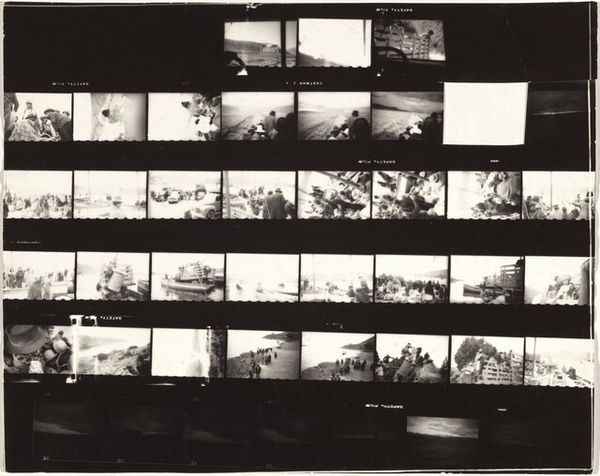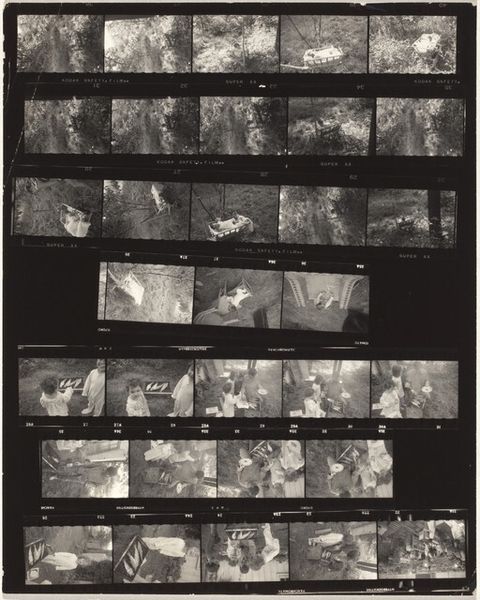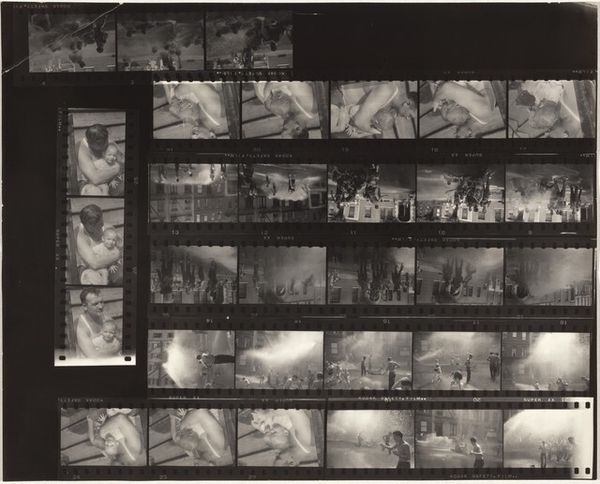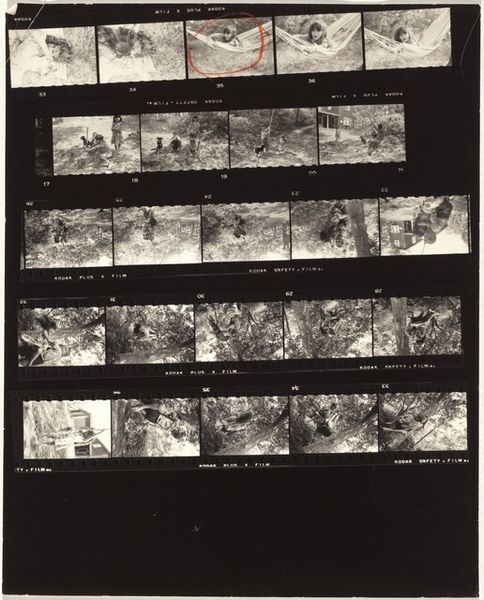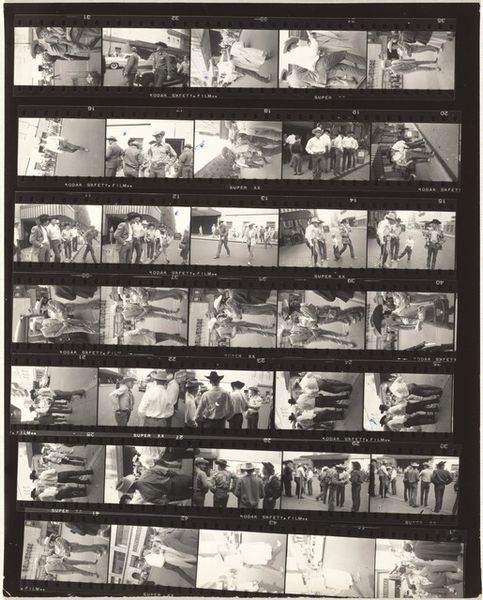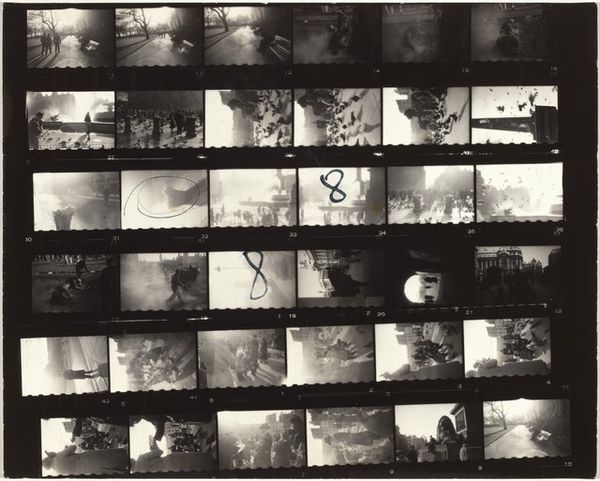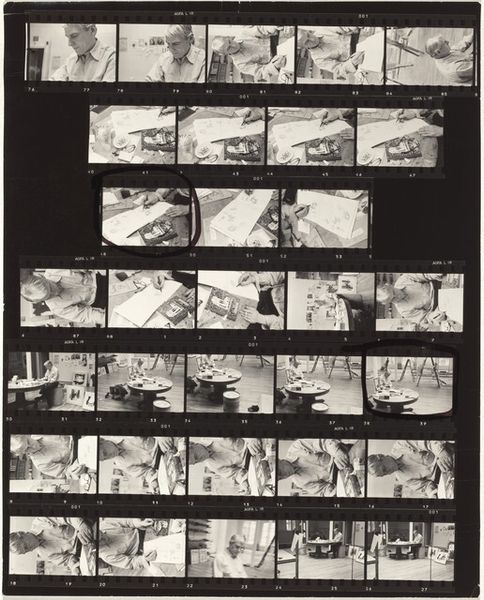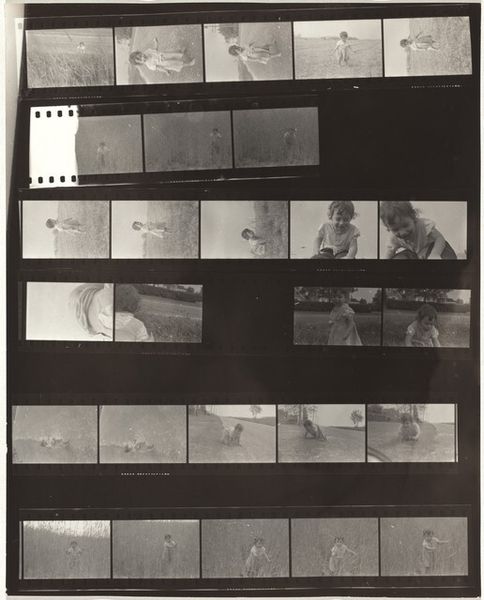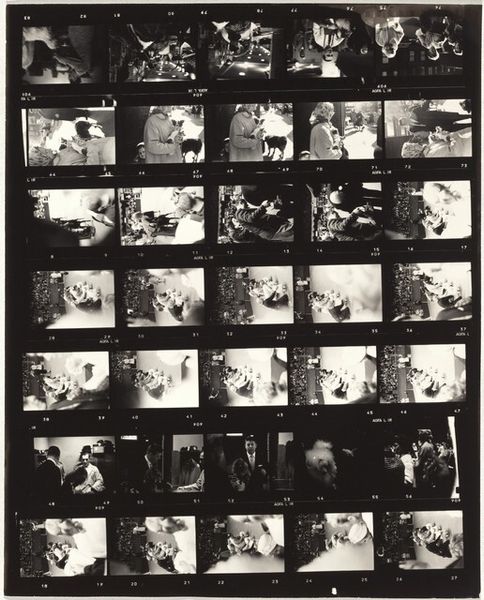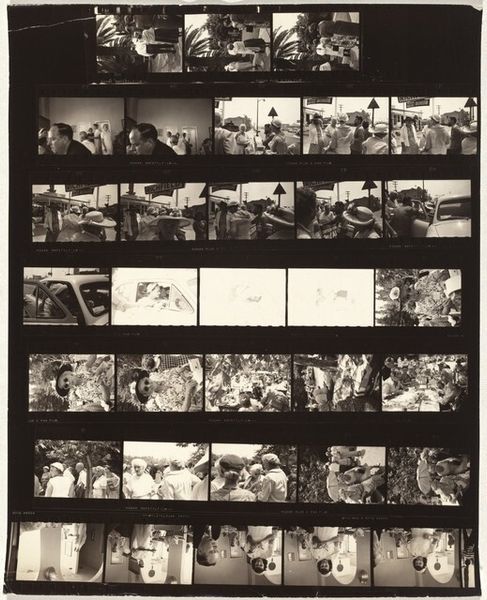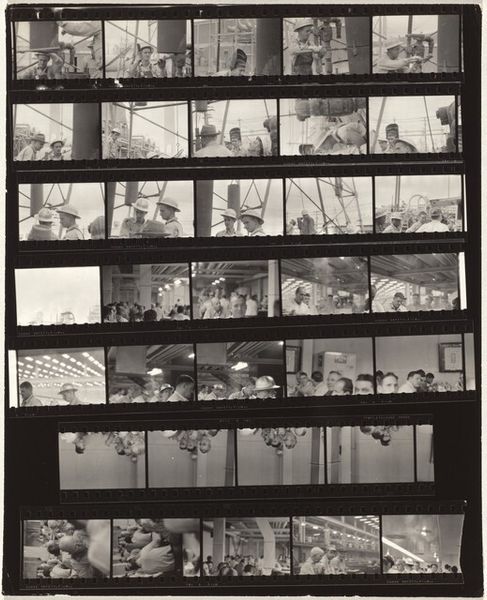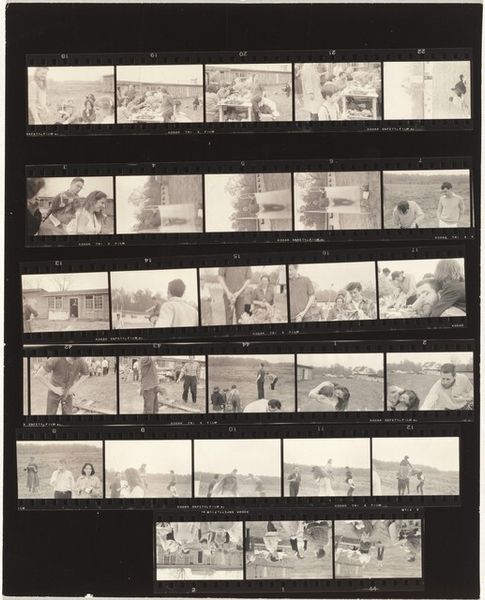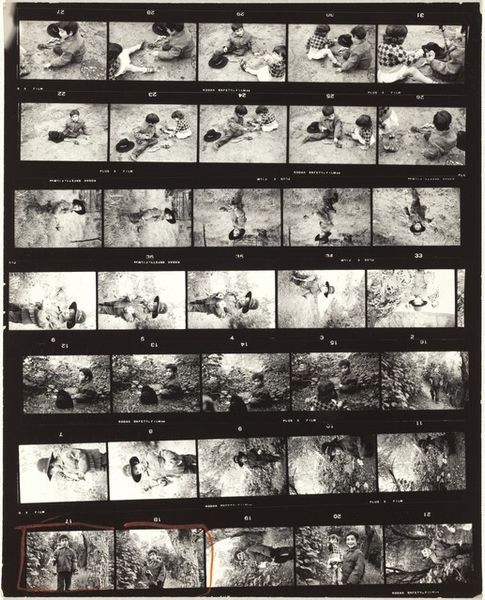
photography, gelatin-silver-print
#
portrait
#
film photography
#
wedding photograph
#
narrative-art
#
wedding photography
#
street-photography
#
photography
#
gelatin-silver-print
#
monochrome photography
#
realism
#
monochrome
Dimensions: overall: 20.3 x 25.3 cm (8 x 9 15/16 in.)
Copyright: National Gallery of Art: CC0 1.0
Curator: Here we have Robert Frank's "Family in Provincetown no number," a gelatin silver print made in 1958. It's striking in its presentation as a series of contact sheet strips. What's your initial read? Editor: Chaotic. I mean that in the best way, though! There's this feeling of a summer day caught in all its fleeting, unfocused glory. It feels less about staged portraits, more like... life happening. Curator: The contact sheet format reveals Frank’s process, the sheer volume of images he took to capture fleeting moments. We see recurring motifs: a figure in a hammock, an artist's setup with a canvas, a pensive child. These symbols… what do they evoke for you? Editor: A languid afternoon. The hammock: ultimate relaxation, escapism. The artist represents creativity, observation. The child… vulnerability, innocence maybe. It all feels a bit romantic, even with the stark monochrome. Curator: And think of Provincetown itself. In the 50s, it was a haven for artists and bohemians, a place where social norms were questioned. These images ripple with that feeling of freedom. Editor: Right! You can almost smell the salty air and hear the distant murmur of conversations. There’s an intentional looseness to the frames that plays against the tradition of perfectly composed family portraits. Almost rebellious. Curator: I find myself reflecting on the idea of 'family' as presented here. Not necessarily a traditional posed photograph, but a collection of moments that, together, form a more nuanced and perhaps truthful portrait. Editor: Absolutely. It hints at the small, everyday interactions, the unguarded moments that define a family's dynamic far more than a posed studio shot ever could. And leaving it untitled just underlines the universality of those moments. Anyone can project their own "Family in Provincetown" onto these strips. Curator: Indeed, it's an open narrative. This image persists, prompting reflection on memory, place, and the quiet poetry of everyday life. Editor: Agreed. It’s messy, honest, and surprisingly moving. A good reminder that beauty exists in the in-between spaces, not just the highlighted, posed ones.
Comments
No comments
Be the first to comment and join the conversation on the ultimate creative platform.
